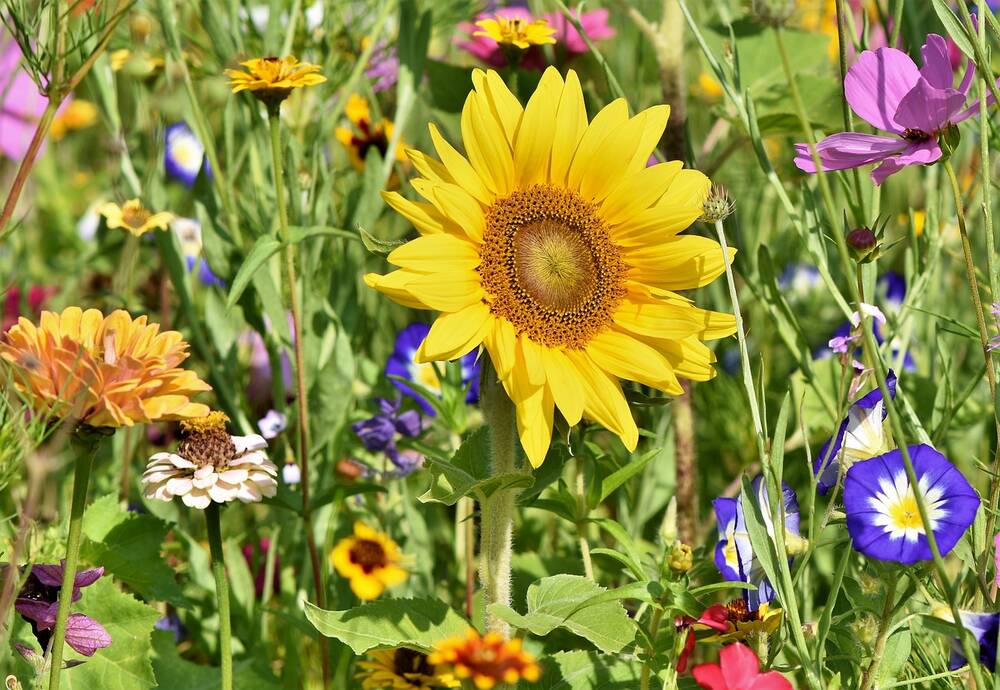The human race largely depends on bees for pollinating our food and keeping it secure, hoverflies for pollinating plants and consuming pests, butterflies for flower pollination, moths for night-time pollination and wasps for some cases of plant pollination.
It’s relatively easy and affordable to plant flowers, and our weather conditions help, alongside regular maintenance. You get rewarded with a gorgeous, vibrant garden populated with thriving bees and pollinators, and strengthen the ecosystem from start to finish.
The importance of bees and insects in your garden
Planting specific plants to target and support pollinators is very beneficial. You increase the overall health of your garden and better the chances of higher yields. It strengthens biodiversity by ensuring that plants can reproduce via cross-pollination, and this diversity creates ecosystem health.
Your plants will be regularly pollinated, like fruits and vegetables, which allows them to produce crops—the transferring of pollen causes reproduction that leads to seed and fruit development.

The role of pollinators in plant reproduction
Pollination is the transfer of pollen from the stamen to the stigma of a flower, which is essential to the reproduction of plants. Bees and insects act as pollinators by collecting nectar and pollen as food and accidentally spreading pollen from one blossom to another. This process is vital in the production of fruits, seeds, and nuts, which are a necessary food source for humans and wildlife.
It is important to note that not all insects are pollinators. Some insects such as ants, flies, and beetles may visit flowers, but they do not transfer pollen efficiently like bees and butterflies. Therefore, it is essential to attract pollinators like bees and butterflies to your garden to ensure successful pollination.
Benefits of attracting beneficial insects
Other than a well-pollinated garden, the key to its success, attracting pollinators brings the following benefits:
- They can act as natural pest control, especially certain bees and hoverflies, as their larvae will eat local pests such as caterpillars and aphids.
- Pollinators help achieve more visually appealing produce, as incomplete and misshapen crops grow when they have not been adequately pollinated.
- Other than your crops, pollinators will enhance wild nature, key for maintaining biodiversity and cultivating a thorough, rich garden.
How to attract bees and beneficial insects to your garden
Planting a variety of flowers, especially the ones mentioned ahead, is a surefire way to attract pollinators to your garden. Try and pick a range that will be blooming year-round, to ensure pollinators know your garden is a reliable go-to food source when others are scarce.
Bright, colourful flowers like white, yellow, blue, purple and red are very attractive to butterflies and bees. Rather than randomly scattered, putting the same types of plants in clusters can be attractive to pollinators as it’s more visible to spot from a distance. Include single-flower tops as they give the easiest access to nectar and pollen, like marigolds and daisies.
Around the garden, add a water source like a bird bath as pollinators will need to drink, especially on hot days. Refrain from using pesticides as these directly harm pollinators. By leaving some garden areas wild, shelter and nesting sites will be provided.
It’s key to plant night-blooming flowers, like the evening primrose or the moonflower, which attract pollinators like moths in the night with their pale, bright colours and sweet scent.
Top flowers to attract bees
There are various flowers that you can grow to attract bees to your garden, including the following:
Lavender

Lavender is a highly popular plant due to its long blooming period; attracting pollinators for a longer period in June or July, sometimes reblooming if trimmed, and contributing well towards local biodiversity. The abundant nectar of lavender is attractive to honeybees, butterflies and bumblebees; the key pollinators of ecosystems.
Other than this, lavender is low maintenance and emits a beautiful scent with famous aromatic qualities. The scent warns off pests while attracting beneficial pollinators. It’s a gorgeous plant that contributes to garden aesthetics and fantastically supports biodiversity.
Sunflowers

A sunflower has large flowers full of nectar and pollen. They are vibrant and distinguishable, striking and tall, creating a diverse garden landscape and adding strong pops of sunny colour that invite a plethora of pollinators.
They are hardy and don’t require much effort to grow, improve your soil, and provide a food source for animals and humans alike with sunflower seeds high in healthy fats and natural proteins.
Bee Balm (Monardo)
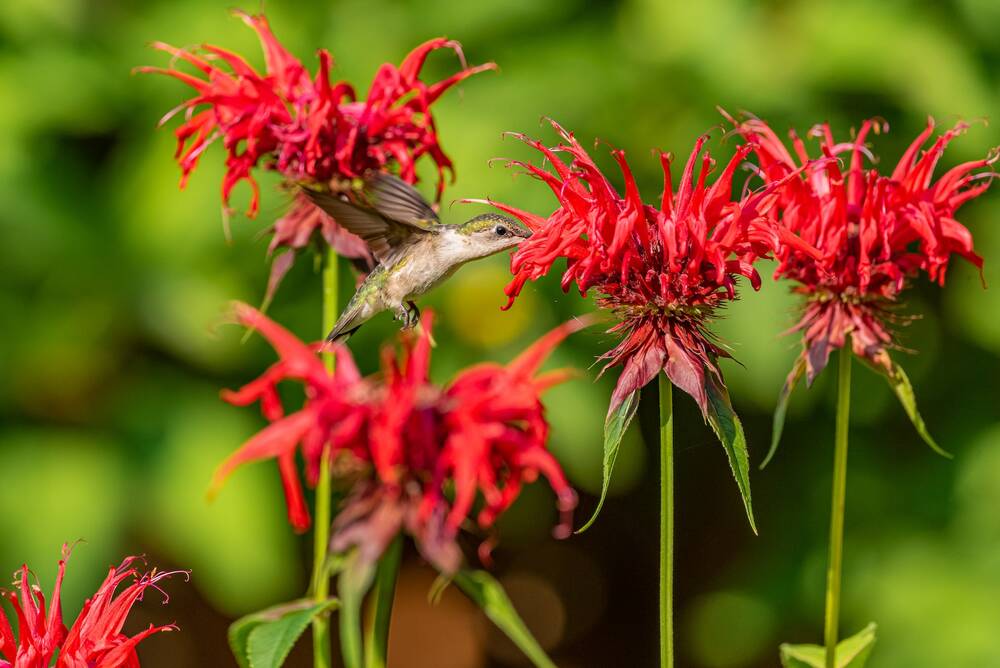
The bee balm flower is well-favoured by bees plus hummingbirds and butterflies. The vibrant flowers are rich in nectar; a valuable source to pollinators during the blooming season.
When crushed, their foliage emits a pleasant aroma with pest-repelling qualities. The plant spreads easily, which can require some work to manage, but also can quickly fill spaces and produces a thriving, pollinated garden.
It’s easy to grow in well-drained soil and has been selectively bred to make it disease-resistant, such as to types of mildew which had been a prolific consumer of previous bee balm variants.
Coneflowers
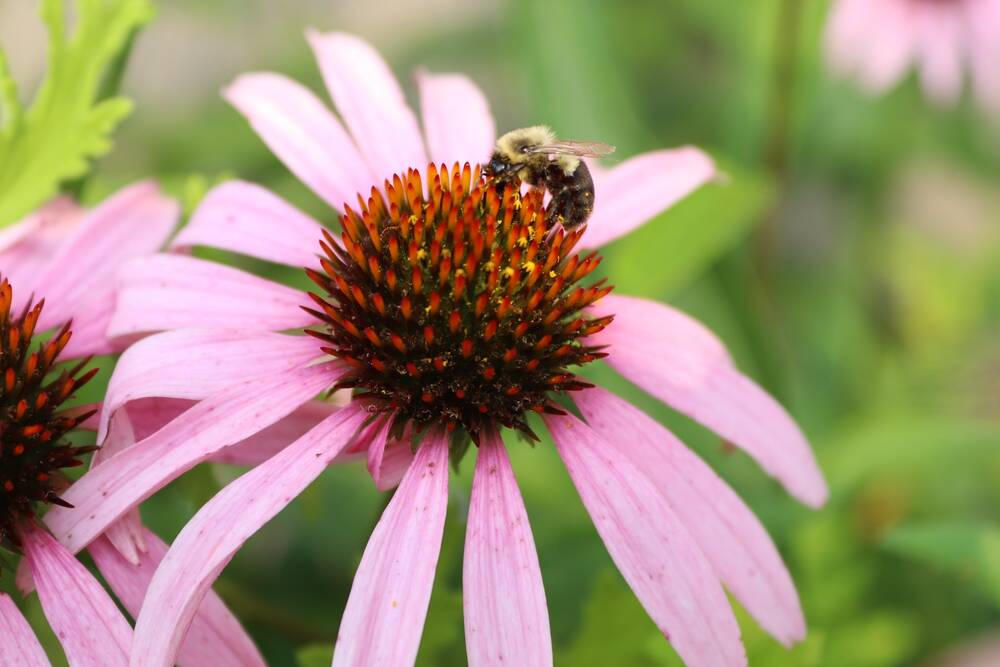
Coneflowers are ideal for attracting pollinators, with flat-topped flowers and big central cones providing an attractive landing pad for insects to locate and access their goods.
Once established, they require very little care. The flowers will begin blooming early summer and keep flowering until autumn. They can produce new flowers everyday, offering a fantastic food source for an extended period.
After the blooming season, coneflowers are valuable throughout winter. The seed heads can stay on the plants, adding to an aesthetic garden and supporting diversity by feeding birds.
Borage

Borage is a flowering plant with a star-shaped blue flower that gives a rich source of nectar. The vibrant blue can also be pink or white, and the leaves emit a refreshing cucumber-like scent. They bloom in late spring and during summer.
They can improve soil structure, attract insects to pollinate and control garden pests. Most helpfully, borage is a devout self-seeder, so can regenerate itself annually with minimal effort from the gardener.
Plant these flowers and you’ll have a supply of beautiful garnishes for salads, desserts, cocktails, as both the leaf and the flower are edible.
Best flowers for attracting butterflies and moths
Attracting these delicate creatures can add another level of beauty to your garden. Here are some of the best flowers to attract butterflies and moths:
Buddleia (Butterfly Bush)
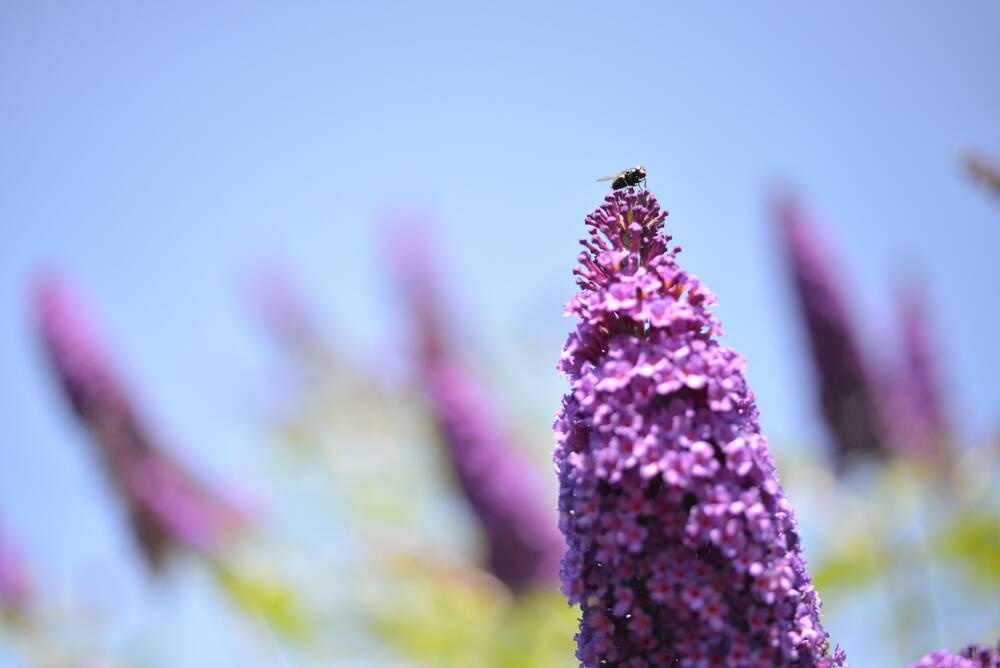
This bush primarily attracts butterflies, as well as hummingbirds and most bees. They grow quickly—up to 3 metres in 1 year—so are great for filling foliage gaps or creating privacy borders.
They bloom from mid-summer to early autumn, producing a reliable yield of flowers for pollinators to feed on. They will require pruning in late winter or early spring, and can require careful management due to their rapid spread that colonises new areas. Stubborn roots make them resilient but hard to control. This dense foliage, however, provides a guarding shelter for wildlife like birds.
Milkweed
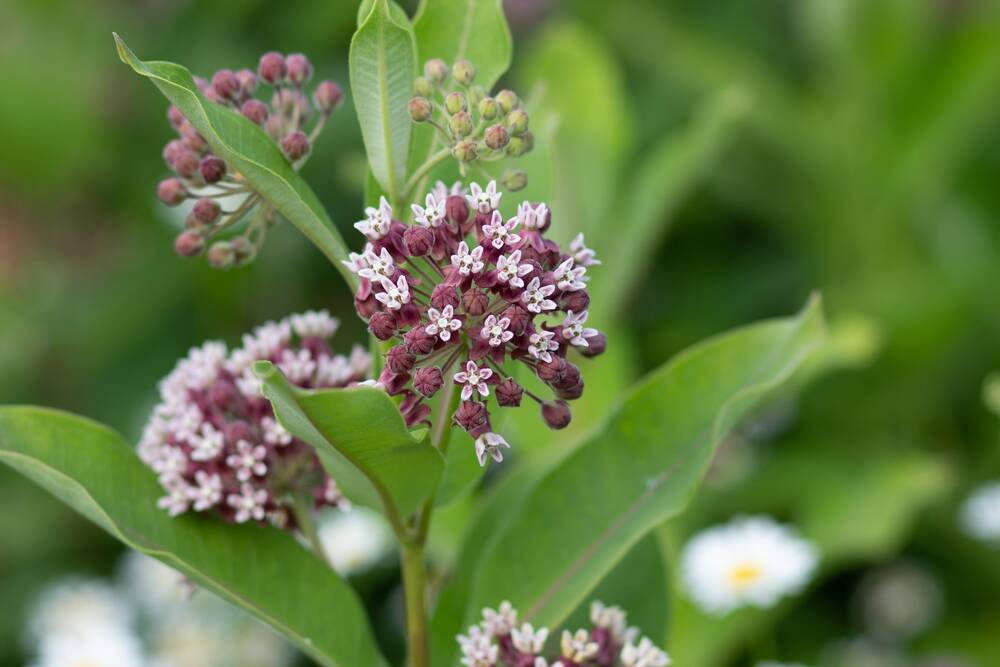
Milkweed is famous for attracting bees, honey bees, and monarch butterflies which are in decline. The intricate flowers can be orange, white, purple or pink and give off a sweet fragrance.
They bloom at the start of summer to its finish, with long-lasting flowers providing an extended period of food for pollinators. They spread via fluffy white parachutes with brown seeds, dispersed in the wind, and spread easily.
Zinnias
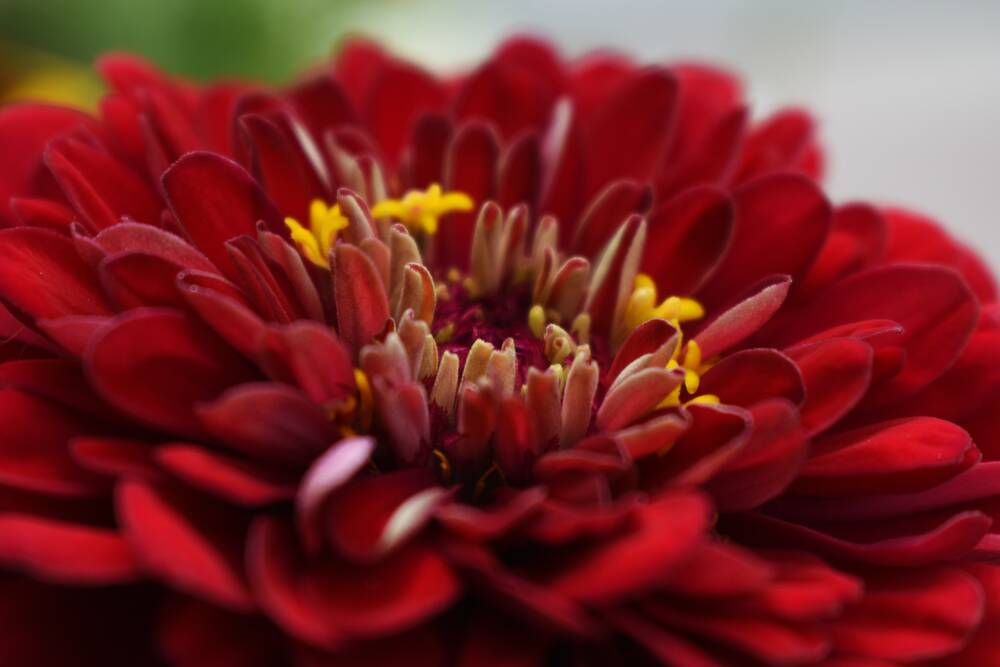
Zinnias are attractive to moths, bees and butterflies, coming in a variety of colours and shapes—either single rows of petals or well-packed layers. They bloom from halfway into summer and last until frost. They are easy to grow, in well-drained soil with sun. They require minimal watering, so are suited to gardens in drier climates.
These look great in gardens, varying in height, offering great backdrops for garden beds. If you want pretty spaces inside as well as out, plant zinnias for free vase flowers that last 7-10 days, brightening a room and freshening its scent.
Marigolds
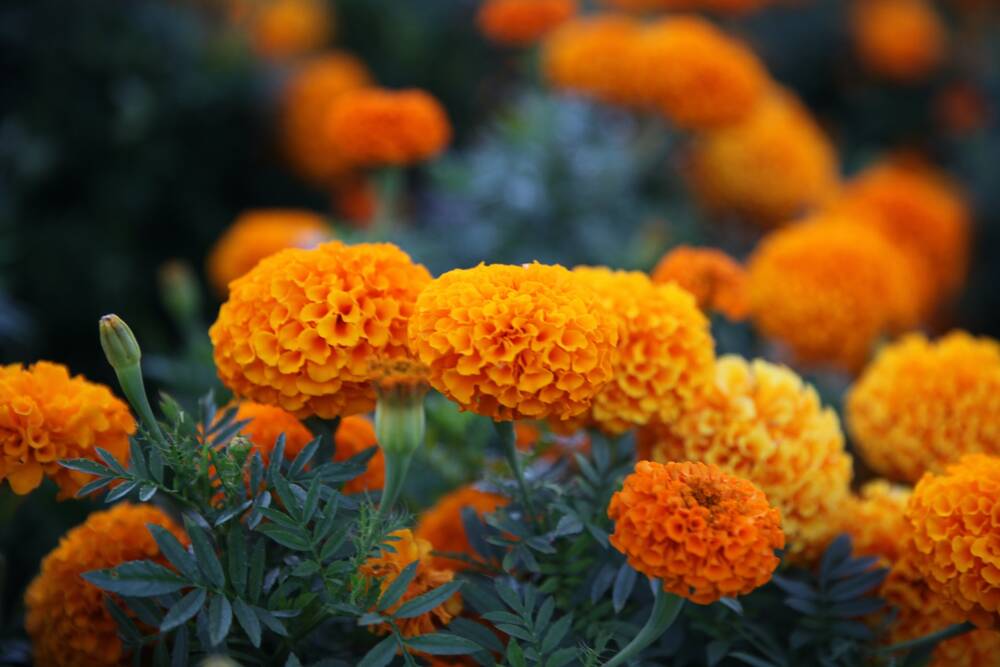
Like their name, marigolds have yellow, gold and orange flowers, displayed in a large round pom-pom-like shape. These plants are distinctive with neat large cylinders, attracting pollinators while adding to the elegance of a cultivated garden. They have a strong, musky scent which can repel pesky insects, so you might plant these near vegetables to try to keep your cabbages unnibbled.
Phlox
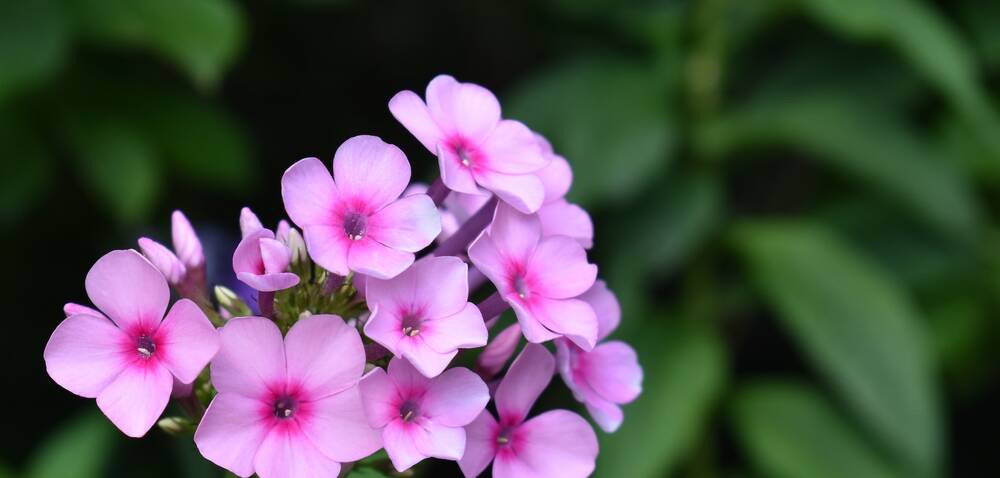
These are key moth attractors, with a sweet fragrance which strengthens in the evenings. They also attract key pollinators like bees and butterflies, with colourful flowers clustered in lush panicles that bloom spring through summer.
Attracting bees and insects to your garden can have a profound impact on the ecosystem. By planting the flowers we have discussed above, you will create the perfect environment for these beneficial creatures.

